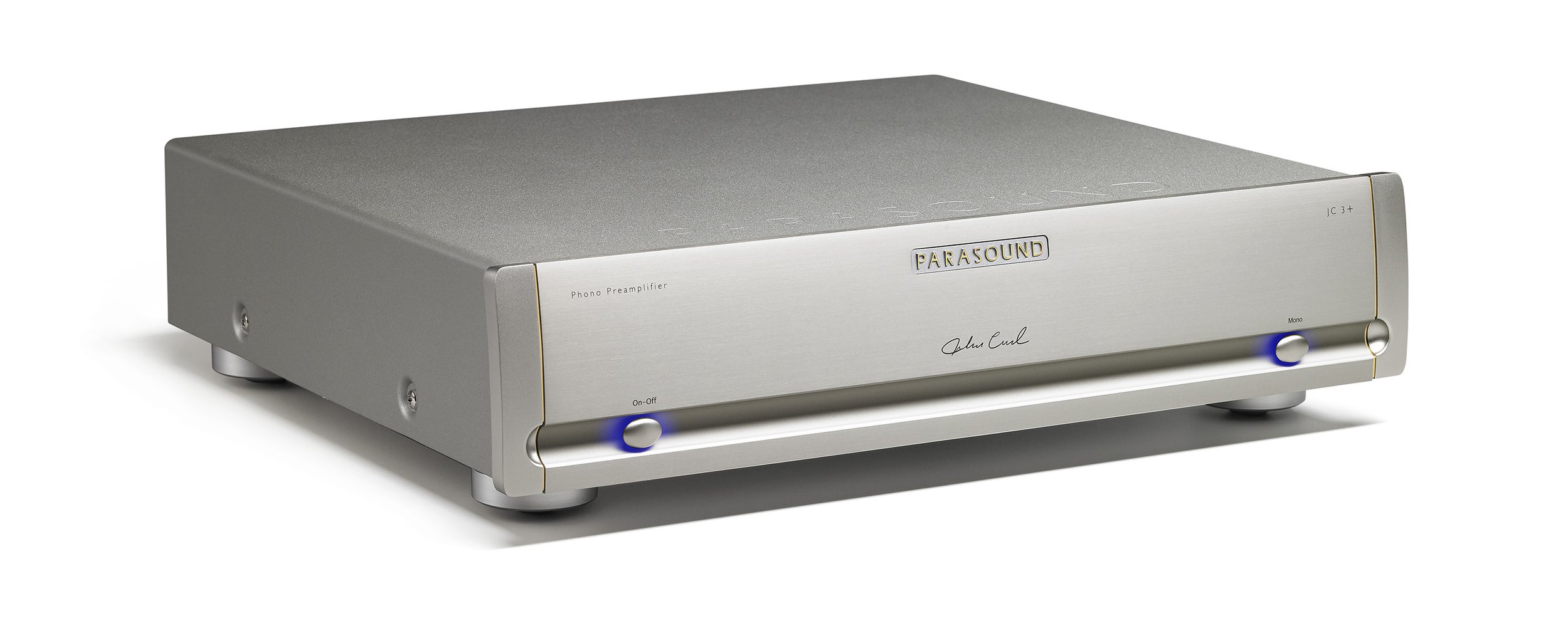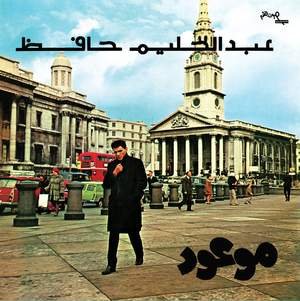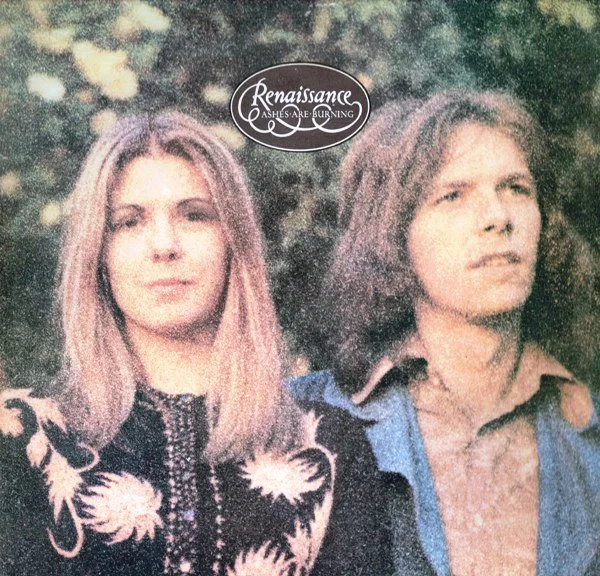PARASOUND HALO JC3+ PHONO PREAMPLIFIER - REVIEW
Parasound Halo JC3+ Phono Preamplifier
Once audiophiles move up the ladder with high quality turntables and cartridges, the next step is finding the right phono preamplifier. The turntable, cartridge, and phono stage trio (and sometimes tonearm) leave many variables, so choosing a phono preamp that fits the technical parameters, and is a good fit sonically, can be a challenge.
Enter the Parasound JC3+. It is the evolution of a design by one of Parasound’s sonic architects, John Curl. Curl is also responsible for Parasound’s best known amplifier designs. We won’t parse through the entire history of his association with Parasound, but, suffice to say, his work endures today. We recently reviewed the Parasound Halo Hint 6 integrated amplifier and were highly impressed by its performance as a Swiss Army Knife of audio products, with a world beating onboard DAC, and superb phono stage.
The JC3+ evolves from the JC3, with some considerable changes. Probably the most consequential is the addition of new loading options on the back panel, which is variable from 50 to 550 ohms, as well as 47K MM loading. Listeners can also fix the loading at 47k for MC. This opens up more possibilities for matching with different esoteric cartridges.
Another big change is the redesigned power supply. A much larger transformer was employed to maximize dynamics. Various other critical parts and circuit signal paths were refined as well. Interestingly, the JC3+ has its own onboard AC line conditioner to ensure the lowest noise possible. There are RCA inputs and both RCA and XLR outputs, and even a switch for true mono. The build quality and finish are superb, with very high quality connectors, knobs, and switches all round. The case can be ordered in silver or black. The Parasound JC3+ retails for $3199.
Set Up & Listening:
We dropped the JC3+ into a system consisting of a Schitt Freya + preamp, an Audio Research VS55 power amplifier, and Acelec Model One monitors. We used two turntables, both the remarkable and recently reviewed Rega Planar 10, and the more modest Rega Planar 6. Both had Rega cartridges installed. Cabling was Audio Art Cable. No special tweaks were used aside from an Audio Art Cable power cord on the unit. Everything was plugged into a Bryston power conditioner. We left the unit on at all times.
From the first time I dropped the needle, it was clear to these ears the JC3+ was several classes above what I was used to. The most obvious areas where I heard very clear differences from every other phono stage I have had in house, either via an onboard module of an integrated amp or a standalone unit, was the separation of instruments, and the absolute precision of the bass frequencies. Another area where the JC3+ brought listening to vinyl to another level was how it organized sound being picked up by the stylus with even complicated pieces of music.
For example, on a record we use quite often, Traffic’s uberclassic jazz rock masterpiece, The Low Spark Of High Heeled Boys, the attack on the piano was far more realistic. The layers of percussion and the drive of the rhythm section were unparalleled. One could also hear Steve Windwood’s voice with more character, and even little details like lips parting, and microphone pops. But it all came together as a coherent fabric.
A recent acquisition, a brand new vinyl remaster of Mawood, by the We Want Sounds label, is one of the best known albums by legendary Egyptian singer Abdel Halim Hafez. It is one long performance piece, recorded live, split over two sides. Of note, the album features the great Omar Khorshid on guitar. The somewhat primitive recording came to life via the JC3+, with the entire band and orchestra laid out across a perceived soundstage. Hafez’s voice was a thing of wonder, and the distinctively tinged oriental and modal flourishes came through with amazingly realistic dynamics.
We took a left turn and pulled out a stack of albums by Renaissance, the sublime English progressive folk rock band that was at their peak in the 70’s. We started with Prologue from 1972, the first album to feature lead vocalist Annie Haslam, who would reign supreme for the rest of the band’s career. Her voice is otherworldly, infinitely soaring to the heavens. On key tracks like “Kiev” and “Sounds Of The Sea”, the sprawling arrangements are rendered with such distinction through the JC3+ it was easy to suspend belief and imagine being in the 10th row at one of their legendary concerts.
The band really started hitting their stride with the follow up from 1973, Ashes Are Burning. The sound was a bit more streamlined, but no less adventurous. There were even a few radio ready tracks like the very catchy “Can You Understand” and “Carpet Of The Sun”. The album was well recorded, with lots of space in the arrangements and Haslam’s voice front and center. Hearing these songs with very quiet backgrounds, superb timing, and spot on tonality, was really a highlight of my time with the JC3+. The same assessment applies to the album that came after it, the epic Turn Of The Cards. It was hard not to get goosebumps hearing “Mother Russia”!
We finished up with the some classic rock in the form of an original A&M pressing of Free’s Best Of Free. While a bit skimpy, there are twelve high energy tracks with which to enjoy the voice of Paul Rodgers and the fierce guitar of Paul Kossof. The JC3+ let the heavy crunch of “Fire And Water” and “All Right Now” come through with realistic bite. It also handled the sly groove of “My Brother Jake” beautifully. If making records fun to listen to is the goal, the JC3+ succeeds with flying colors!
Conclusion
The enduring design of the Parasound JC3+ breathes new life into well worn platters, and maximizes the performance of virtually any commensurate turntable. Its incredibly low noise floor and transparency are unmatched at this price. Is there better? I would venture to guess so, but at a steep cost.
The unique part about a high quality vinyl playback system is that it is a sum of its parts. Matching a turntable with the cartridge that satisfies, and a phono preamplifier that brings out the best in the pairing, is no easy task. Of course some turntables allow for juggling tonearms as well, which adds another layer. The JC3+ worked as a perfect dance partner with both the Rega Planar 10, and Planar 6. It will likely perform as well with most turntables and cartridges on the market
The Parasound JC3+ is not entry level, but at a buck under $3200, it is a stone cold bargain. Finding fault with the sonics and build is a fool’s errand. If you want pure solid state, accurate vinyl playback, the JC3+ is a standard bearer. If you want colored sound, tube flabbiness, or audio jewellery, look elsewhere. If you have spent upwards of ten grand on your turntable and cartridge, the JC3+ is a must audition.
Product Information:
Parasound JC3+ Phono Preamplifier: $3199
https://parasound.com/jc3+.php
MANUFACTURER
Parasound Products, Inc.
2250 McKinnon Avenue
San Francisco, CA 94124
parasound.com
Sales@parasound.com
AKRM






